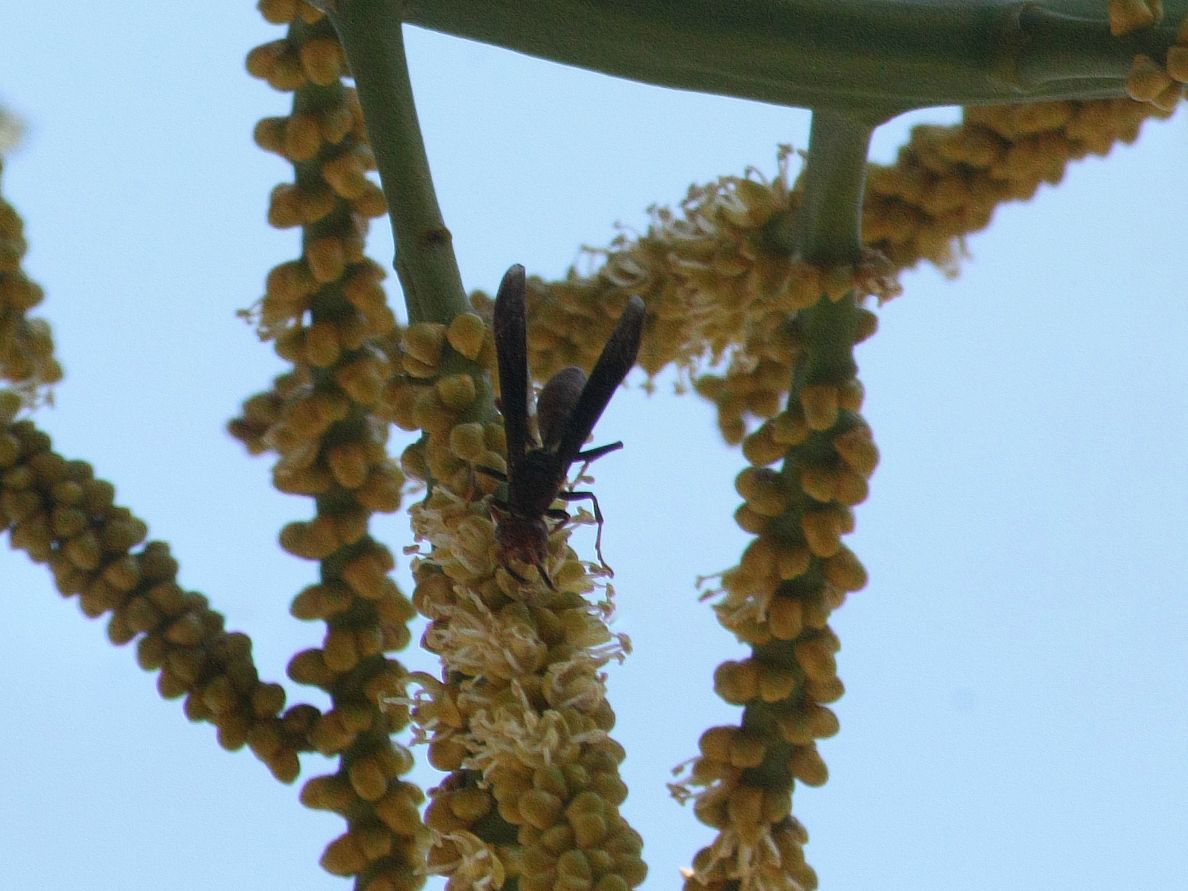Citizen Scientists To Document Biodiversity With High-Resolution Imagery During Summer Solstice
Byron SpiceThursday, June 14, 2012Print this page.

GigaBlitz Captures and SharesPanoramic Images of Everyday Nature
Ahigh-resolution image of a palm tree in Brazil, which under close examinationshows bees, wasps and flies feasting on nectars and pollens, was the top juryselection among the images captured during last December's Nearby NatureGigaBlitz. It's also an example of what organizers hope participants willproduce for the next GigaBlitz, June20-26.
TheNearby Nature GigaBlitz events are citizen science projects in which people usegigapixel imagery technology to document biodiversity in their backyards — ifnot literally in their backyards, then in a nearby woodlot or vacant field. Theseimages are then shared and made available for analysis via the GigaPan website. Theevents are organized by a trio of biologists and their partners at CarnegieMellon University's CREATE Lab.
Informationon the GigaBlitz scheduled to coincide with this year's summer solstice isavailable online at http://science.gigapan.org/call-for-entries/.
December'sGigaBlitz included contributors from the United States, Canada, Spain, Japan,South Africa, Brazil, Singapore, Indonesia and Australia. Ten of the bestimages are featured in the June issue of GigaPanMagazine, an online publication of CMU's CREATE Lab.
Theissue was guest-edited by the organizers of the GigaBlitz:Ken Tamminga, professor of landscape architecture at Penn State University;Dennis vanEngelsdorp, research scientist at the University of Maryland'sDepartment of Entomology; and M. Alex Smith, assistant professor of integrativebiology at the University of Guelph, Ontario.
Thetop-rated image from the winter solstice GigaBlitz, Palmiero em flor, by EduardoFrick, drew high praise from the guest editors. "We're delighted that thisdeceptively simple composition was so honored because it reveals biodiversityin action and up close," they explained. "Even deep within our cities,pollinators such as bees, wasps, butterflies, ants, hummingbirds and some batspecies do the work of moving pollen, ensuring successful fruit and seedproduction."
The trio got theidea for GigaBlitz while attending a Carnegie Mellon conference on thescientific use of gigapixel imagery. An example of this technology is the GigaPan system developed byCarnegie Mellon and NASA. It can combine hundreds of digital photos into alarge panorama that can be interactively explored via computer. Thousands ofGigaPan camera systems are in use worldwide and available commercially through GigaPan Systems Inc.
Tamminga,vanEngelsdorp and Smith envisioned something akin to a BioBlitz, an intensivesurvey of a park or nature preserve that attempts to identify all livingspecies within an area at a given time, and citizen science efforts such as theAudubon Society's Christmas Bird Count.
"Weimagined using these widely separated, but nearby, panoramas as a way ofcollecting biodiversity data — similar to the Christmas bird count — wherecitizen scientists surveyed their world, then distributed and shared that datawith the world through public GigaPans," they wrote. "The plus of the GigaPan approachwas that the sharing was bi-directional — not merely 'This is what I saw,' butalso hearing someone say, 'This is what I found in your GigaPan.'"
Smith, Tammingaand vanEngelsdorp are fellows of the FineOutreach for Science, a project funded by the Fine Foundation of Pittsburghto foster scientific use of gigapixel imagery.
Byron Spice | 412-268-9068 | bspice@cs.cmu.edu
